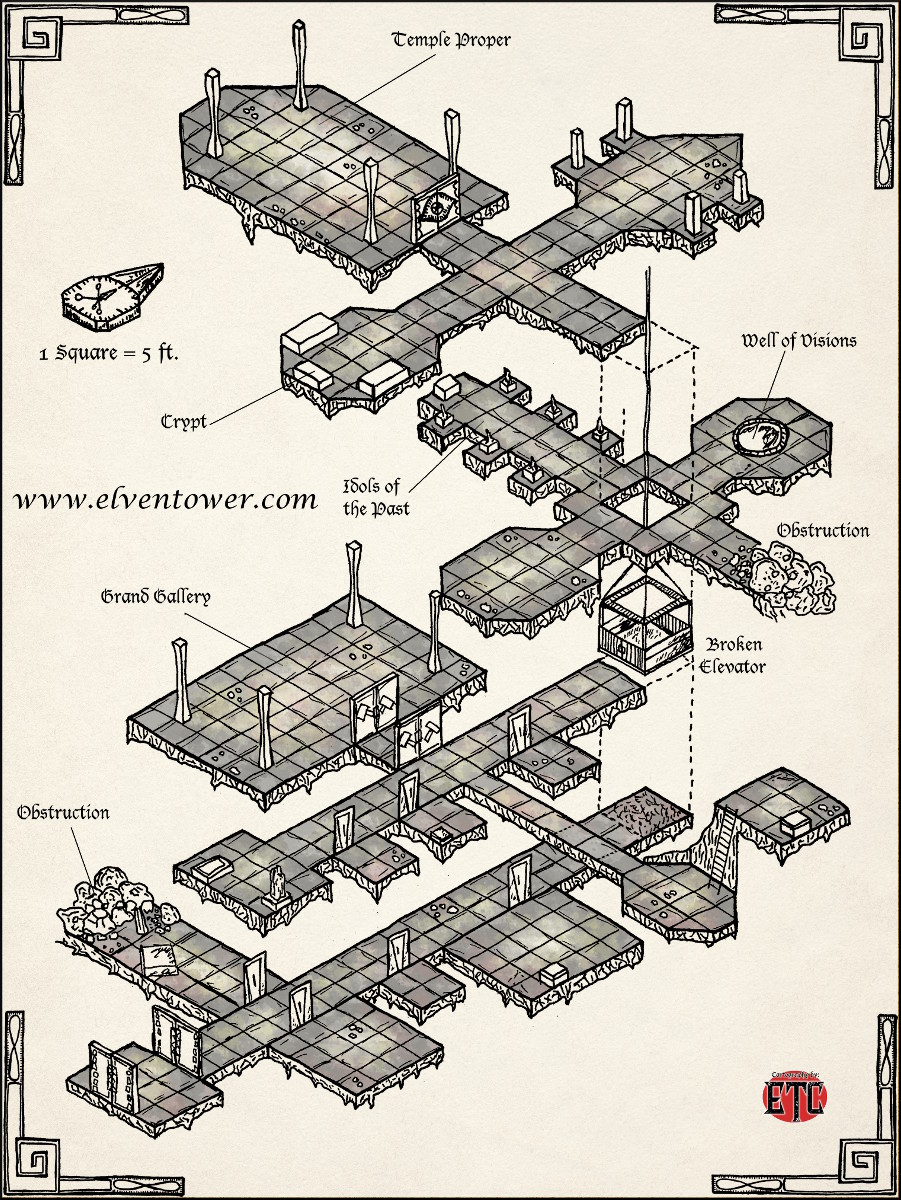Ilbranteloth
Explorer
Some things I'd like to see, in no particular order:
- limited if any baked-in backstory to allow the module to be fully self-contained as far as possible (yes this is possible even when a module is part of an AP)
- if it's a dungeon crawl:
- - - multiple ways in and out, some obvious, some not so
- - - closed loops on some levels to avoid linearity (linearity is boring!)
- - - multiple access points and methods between one level, deck or floor and another; some of which skip or bypass levels
- - - secret areas that a party might miss completely
- - - intentional 'holes' in the map; areas of solid rock that don't contain a secret room no matter how hard they look
- - - linear lengths of stairways noted on the maps and-or in the write-ups (this is always a headache)
- passing attention paid to 'what-if' situations e.g. what if the PCs are three days late in completing the time-sensitive mission, or what if the PCs charm or capture this person instead of killing
- boxed text describing each area and its obvious contents and-or occupants (explained below)
- something different or new; whether it's a magic item, a monster or villain, a location, a nifty trap, or whatever - a reason to remember the module afterwards
- wandering monsters that make sense, and if they don't make sense don't put 'em in
- a day by day (or similar) story development track if the adventure site is not static - particularly important in race-against-time style modules
- monsters' stats in 1e-style short form in the write-up for the room in which they (are most likely to) appear
Boxed text: the reason this is important is that without it it's far too easy for a DM to miss key elements that are buried in the text, leading to headaches later. The trick is to write the boxed text as 'direction-neutral' - NEVER use "left" and "right" as directions as the party might approach from the other way! - and if the area is large enough you might need to have several boxed texts, one for each possible direction of approach, as not all of it can be seen at once.
Lanefan
At the risk of lots of repetition of what's come after this post, I really like this one as a starting point (I'm sure [MENTION=29398]Lanefan[/MENTION] is not surprised).
To add to this list:
---Better separation of chapters in an AP, perhaps with a short section on hooks for that chapter. That way it could be split into smaller adventures if somebody wanted to use just a part of one.
---I like the sections in an encounter description that started in 3e(?) which segregated monsters, treasure, traps, etc. While I like (actually prefer) some background, boxed, or descriptive text, the mechanical stuff should be isolated, and nothing but mechanical.
---Within the DM specific info, notations about things that matter in other rooms or locations. For example, it's not uncommon to have a guard post with an alert that says, "reinforcements come from this room" but they don't always remind you in that room that you might have removed monsters from it already.
---In a dungeon, particularly a lair, I write a description of the life in the lair. Monsters don't just sit in rooms and wait for adventurers. Wandering monsters in places like this should also be tied to this. So in a goblin lair, they could typically be found in and around a certain group of rooms, but during the night several hunting parties of x number of goblins are out hunting, etc.
---More intelligent monsters. Not as in more monsters should be intelligent, but that intelligent monsters should be run that way. Intelligent monsters will have escape plans, defense plans, routines, and also some sort of information as to when they are willing to fight to the death.
---Bigger dungeons. Not necessarily more encounters. Catacombs, limestone caves systems, and mines can consist of miles of tunnels. Yet you'll have an adventure in some ancient dwarven mines that are 20 or 40 rooms that fit on a single page at 5' or 10' per square.
---3D dungeons. Ideally this means they'll have isometric style maps to go with them. Especially caves, since tunnels aren't level. But most dungeons don't need to be segregated into neat levels.
---Since we're dealing with the digital age, bonus materials online. Printable maps are an obvious choice, fleshing out backgrounds and design notes. I think WotC missed the boat with TftYP by not providing the original art form ToH and LSoT online.
Something I don't think is likely to work in a published adventure that pretty standard in mine are encounters that are just too difficult for the PCs. To me, there should be circumstances that require retreat and potentially help to achieve. Some of the APs have had this, but much too far the other way (RoT for example), where the PCs became bystanders instead of simply coming with more help.




